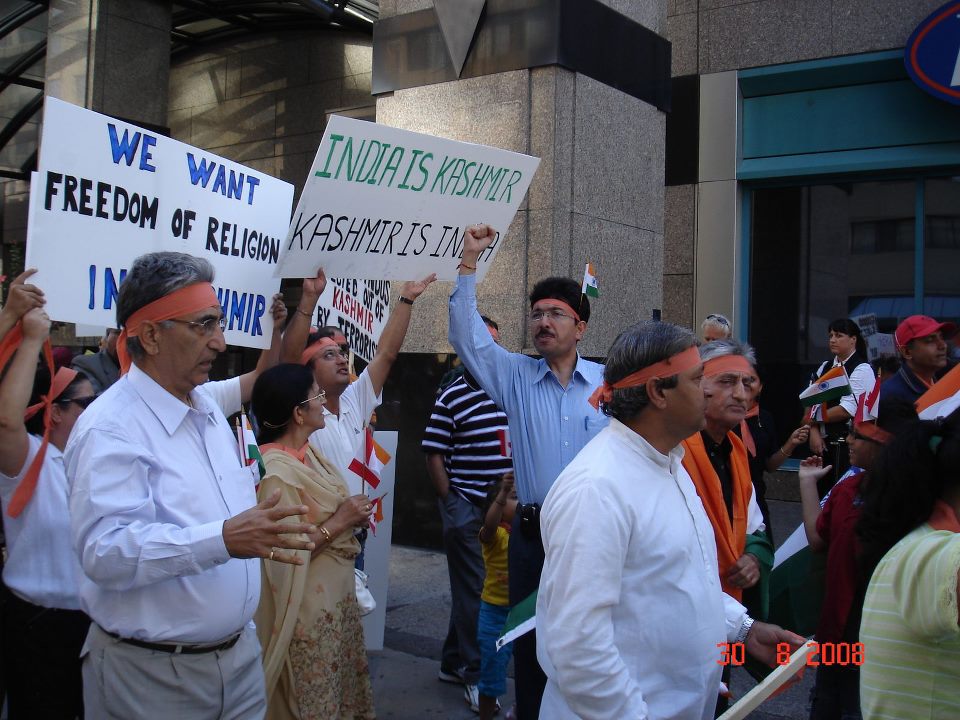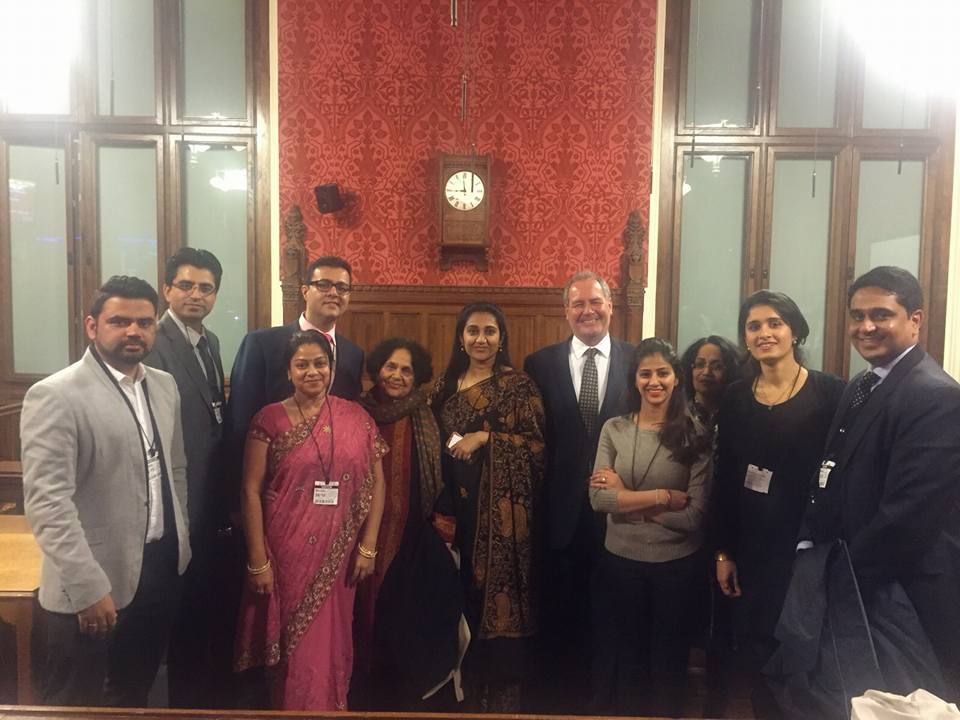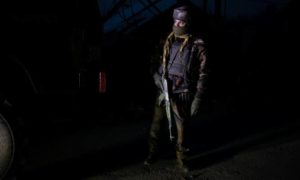As new voices from Jammu and Kashmir are resonating at global level, new narratives have shaped up and found an audience. In this third part of the four-part series on the role of JK Diaspora, the author argues that regardless of one’s views about these emerging perspectives, they’re gaining traction.
Outside Mainland India, Kashmiri Pandits have made their mark in various fields. Much like their Muslim brethren, their talent has helped them blossom in American and British pastures. Among them is Vidya Bhushan Dhar.
As part of diaspora groups like the Indo-Canadian Kashmir Forum, Dhar claims, “I equate our community with seeds. Vested interests tried to bury us, but they forgot that seeds germinate. These so-called world organizations like the UN and human rights groups did nothing for us.”
Dhar’s family was a part of the mass migration of Hindu minorities that began in 1990 as the insurgency escalated in the Valley. His family sought refuge in Jammu before moving to Delhi. Likening his mother to Nirupa Roy’s classic character in Deewar, he grieves, “When Amitabh Bachchan buys that building for his mother because she was a labourer who lifted bricks during its construction, that reminds me of my mother. My Mom painted the very same house we lived in.”
Like Ayyub Thakur and Ghulam Nabi Fai, Dhar spent some time in Saudi Arabia. After that, he migrated to the Emirates. Now a Canadian citizen living in Toronto, he is a staunch advocate for Panun Kashmir, “an autonomous frontal organisation of Kashmiri Hindus formed in December 1990, whose primary demand is a separate homeland for Kashmiri Pandits in Kashmir Valley with status of Union Territory”.
Echoing the sentiments of pro-Panun Kashmir Pandits outside the Valley and in mainland India, he demands a UT status for the “separate homeland” if he is to go back.
“I’ll construct a house there and might even make that my summer home. That is my prerogative. Because over time we have adopted other countries like the UK and US as home,” he asserts. “It isn’t just about the emotional aspect of returning there because I have to make some money to keep my kitchen fires alive.”
Dhar now feels that Pandits have found their voices through TV debates, literature, etc.

Dhar leading the 2008 Amarnath Protest at Toronto.
Unlike the Kashmiri American Council, the Indo-American Kashmiri Forum (IAKF), the body “representing the socio-political voice of the Kashmiri Pandit community residing in the United States”, ran a shoestring operation especially in terms of access and resources against Ghulam Nabi Fai, who was arrested by FBI in 2011 over alleged “links to Pakistan spy agency”.
“He [Fai] had a well-staffed office on the prime Downtown K-Street. He had massive resources and we couldn’t get out of this David vs Goliath scenario,” said former IAKF President Vijay Sazawal on a Times Now panel after Fai’s arrest.
Since then, the Kashmiri Pandit diaspora-backed narrative has only strengthened.
ALSO READ: Across the LoC and the Oceans: Shopian and Budgam on the World Map
Back in London, the 2018 Republic Day protests outside the Indian Embassy predominantly spearheaded by Lord Nazir made airwaves in India. That too, because mainland Indians countered Mirpuris and Pakistanis with their own slogans and signs. Whether it is through initiatives like Kashmiri Pandit Cultural Society or certain J&K state subjects raising the plight of Pandits at these protests, some see it as an Indian narrative through select Kashmiris.
Within this mainland Indian contingency that came to counter, many Kashmiri Pandits were quick to bring up the plight of the migration.
“The Azad Kashmiris find it difficult to respond to those allegations,” Muzzammil Thakur, the son of Ayyub Thakur, says. “They aren’t fully aware of what happened in 1990 so they will find it a bit difficult to answer to a pro-India Maqbooza Kashmiri.”
About four years ago, at a “Pandit Exodus Remembrance Day” in Trafalgar Square, a woman from Burmal, Jammu held up a sign: “Kashmir belongs to the Pandits, Dogras, Sikhs, Gujjars, and Bakkarwals.”
Seven years before this, there were demonstrations outside the Indian Embassy regarding the Amarnath row. The agitation was centered on the transfer of forest land in the Valley for Amarnath Yatra pilgrim facilities.
Also, a Jammu Dogra had played a part in having the 2017 ‘Burhan Wani Day’ rally initially cancelled by writing to local legislators. The indigenous pro-India, Kashmiri voice clearly finds more prominence than a voice outside the Valley. A Rahul Pandita in Delhi holds equal weight as a Basharat Peer in New York or a Mirza Waheed in London.
Such provincialism gouged the London resident from Jammu, Manu Khajuria, into action.
Khajuria and Voice of Dogras (VOD)—“the outfit working assiduously to bring back the lost narrative of the Dogra community”—co-Director Lalit Sharma do gather a few Jammuites outside the Pakistani High Commission in Knightsbridge to protest ceasefire violations along the LoC. Although not to the scale and extent of demonstrations, both do manage to congregate a crowd.
While they might be at a nascent stage with their activism, having Conservative MP Bob Blackman attend Jammu and Kashmir Day in Parliament is a testament to some proactive advocacy.

Lalit Sharma and Manu Khajuria with Bob Blackman.
“The whole Amarnath Row unfairly earned us the communal tag,” Khajuria says. “Plus, how can also one talk about the state of J&K without regard for our aspirations as well?”
After 1947, the seat of power shifted from Jammu to Srinagar with Sheikh Abdullah at the helm of the state. The Dogra Dynasty therefore began its descent into obscurity. To spread awareness of Dogra history among the youth, the VOD team conducts seminars at Jammu University. In doing so, there is a push to nurture the ability of its youth to build and project the Jammu narrative.
“While diplomacy and tact were strong suits of our founder Gulab Singh and his successors, the Dogras are ultimately a martial race and not politically savvy in articulating our side of the story,” Khajuria says. “On top of that, the younger generation isn’t very aware of Dogra history.”
This is why Voice of Dogras was started.
Much like the Mirpuri Diaspora, many reckon, there is a paucity of prominent entities that craft and amplify the Jammu narrative.
Interestingly, Mirpur, the city from which many flag-bearers of cross-LoC campaigns overseas hail, is a just 158 kilometers away from Jammu City, J&K. Under the Maharaja, they were both a part of a united Jammu province. If not politically, many from Pakistan Administered Kashmir are ethno-linguistically of Khajuria’s clan. And since the inhabitants of the erstwhile princely state of Jammu and Kashmir included Kashmiris, Jammuites, Ladakhis, Gilgitis, or Baltis, Khajuria, therefore, prefers to use the term “J&Kian.”
ALSO READ: Across the LoC and the Oceans: First Movers – The Mirpuris
And of course, London being a hub for many lobbies does shape many new JK narratives. “In this city [London], the conversation concerning the Riyasat (state) conveniently neglects voices from not just us Jammuites, but the ones from POJK (Pakistan Occupied Jammu and Kashmir) who are pro-Maharaja. Deeming them ‘Kashmiris’ unfortunately co-opts them into the Valley’s politics,” Khajuria believes.
These ideologues include people like Shabbir Chaudhury, Samina Raja, and her husband Sajjad Raja. “I visited Sajjad Raja’s house and there was a picture of Maharaja Hari Singh on his wall. I don’t even have a picture of the Maharaja in my house,” Khajuria laughs.
But alongside Hari Singh’s picture, hangs another one, whom many consider as the founding father of the movement.
To be continued…








